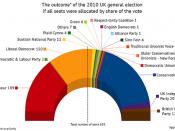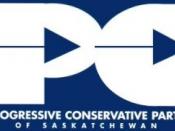Step back and observe the configurations, compositions and driving cogs of today's democratic societies, and one will find that there is one repeating theme; the sharing of power. Corporations, religious sects, universities, unions, and hospitals make decisions through committees, conferences and compromises. Why is it then that when it comes to running our country we still entrust power to a single select group and expect them to make the most auspicious decisions for Canadians every time? The Canadian government is a concentrated power structure out of step with other aspects of society. For our democracy to keep pace with the developing world, Canadian citizens must face these facts, as citizens in other countries have, and restore our political structures to mirror the broad range of political dispositions in today's diverse communities. This goal can only be achieved by abolishing the current electoral system of plurality and implementing proportional representation.
The current political electoral system in place in Canada today is called the plurality system or first past the post.
Under this system adopted from the British, the country is divided up into 301 single member districts. In each riding the party who wins the most votes, regardless if it's a majority or not, elects an MP to the House of Commons. A party may win by one vote, yet those who finish second and third receive no reward whatsoever. As a result their votes are wasted. Under this system there have been endless examples of unfair party representation. For example, in Prince Edward Island in 1993, Catherine Callbeck's Liberal party won 97% of seats (31 of 32) with a mere 55% of the vote. This left 40 % of the voters who voted for Tory with one MLA and 5% of the voters who voted NDP with none. In the...



Great!
Great essay, i liked the intorduction and you had excelent debate points!
1 out of 1 people found this comment useful.